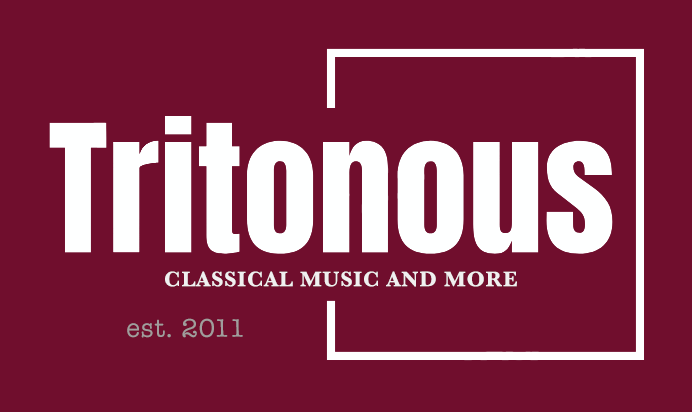Our chief critic has spent his week profitably:
by Alastair Macaulay
Among London’s several high-prestige concert halls, none matches the Wigmore Hall for its particle gift of wrapping its audience up into its performers’ music-making. Even in the balcony or along the further walls, those present become part of the same intimate sharing.
Thus it was on Good Friday this year (April 18), when the English Concert performed Bach’s St John Passion. Although I was raised in a Christian household to love the St Mark motto “Lord, I believe – help thou my unbelief”, I have long been an unbeliever who sporadically revisits Christian music as if to say “Lord, I don’t believe – do help my belief.” There are no works more likely to succeed in this than the two Bach Passions (St Matthew and St John). The critic and philosopher Michael Tanner (who died last year) once observed that the “St Matthew Passion” and Wagner’s “Tristan” were the two works with the power to suspend disbelief while one was attending to them: one subscribed to their values at least during their duration. The “St John Passion” is a less beloved work than the “St Matthew”, but among musicians it has often been the more admired. This Good Friday at the Wigmore, it engrossed its audience – myself not least – past any point of agnosticism.
It was performed on this occasion by the English Concert, directed by Francesco Corti. There were fourteen instrumentalists and nine singers, of whom only Patrick Grahl (Evangelist) did not join in the chorales. Though concerted, these singers were highly individual: Rachel Redmond a very bright-voiced and bright-eyed soprano who made her solo music dance, Jess Dandy showing poise and gravity in the alto music, while the magisterial Ashley Riches as Jesus and the vehement Morgan Pearse as Pilatus were both apparently led by the words. Every contribution counted vitally; individual harmonies, sustained notes, the placing of single notes (my mind returns to the subtle use of chest register in Dandy’s sustained low C is “Es ist vollbracht”), all mattered as threads in this rich tapestry. The crucixion of Christ is the most complex part of the Christian religion in its elements of sadism and masochism, sacrifice and passive aggression; the St John Passion is sublime in the way Bach puts these crucial ingredients in context of a larger range of spiritual feeling.
Three days later, again at the Wigmore Hall, the soprano Lucy Crowe and oboist Olivier Stankiewicz played, with an instrumental ensemble of (at most) eleven colleagues, music composed between 1705 and 1735 by Bach (1685-1750) and three of his European contemporaries: Jan Dismas Zelenka (1689-1745), Antonio Vivaldi (1678-1741), and George Frideric Handel (1685-1759).
Bach’s music, both religious and secular, occupied the evening’s first half. The cantata “Liebster Jesu, mein Verlangen” (BWV32) doesn’t suspend any disbelief on my part: although I love it, it fascinates me as an example of what Tanner (apropos of Wagner’s “Parsifal”) liked to call “the psychopathology of religion”. The human soul calls out to Jesus longs for union with him in terms – and in music – that approaches the erotic. Like the multi-part wedding cantata “Weichet nur, betrübte Schatten” (BWV202), it’s a score for soprano and oboe, but, whereas “Weichet nur” is decorous and charming, something in the soul-related concerns of “Liebster Jesu” captures deeper levels of Bach’s imagination. His oboe concerto (BWV 1056R) is a reconstruction that involves some music familiar from other Bach works – Bach, not unique among composers, was a good housewife in the sense that he knew how to adapt one score to create another – and, like so much of Bach’s music, challenges ideas of expression. Its structural energy comes from a deep inner level.
Zelenka’s sonata no 3 for violin (Maria Włoszczowska), oboe (Stankiewicz), bassoon (Amy Harman), and bass continuo (ZWV 181) is a dazzlingly intricate composition, with instrumental voices now working together and now answering one another like high-energy characters in a first-class opera buffa. Vivaldi’s oboe concerto is entertaining in a different way: it abounds with sheer theatrics, as Vivaldi – very enjoyably – creates one sensation after another. Stankiewicz collaborates with instrumental colleagues – and with Crowe – with panache, virtuosity, and with infectious humour.
Crowe has been known for eighteen years as one of our foremost Handel sopranos. Her singing has purity without inhibition, sweetness with elements of voluptuousness, plenty of wit and temperament, and, as this concert’s Bach cantatas reminded us, the capacity to express both soul and body. She closed the concert with three disparate Handel arias (and a fourth as an aria). The title “Amadigi di Gaula” may sound like Handel’s answer to the Asterix cartoons, but the aria “Desterò dall’ empia Dite” proclaims rage and determination with fabulous force. From Handel’s “Aci, Galatea, e Polifemo”, the aria “Quì l’augel da pianta in pianta” is a marvellous example of pastoral with a twist, evoking not just birdsong but meadow views: an idyllic setting for personal affliction. At one point, Crowe sang a series of five staccati, soft and long, on the same high note, each subtly different in tone: a marvel. An aria for Poppea in “Agrippina” reminded some of us of the brilliantly spirited character who did much to put Crowe on the map (and vice versa) in 2007; and an aria from “Teseo”, sung as an encore, demonstrated how Handel knew how to turn cliché words into gold. In a Q-&-A cadenza for soprano and oboe, the music-making glee that had characterised the whole evening reached one final peak.
Three nights later (Thursday 24), in the first of two Schumann recitals, Christian Gerhaher and Gerhold Huber were beyond exemplary: absolutely economical, yet utterly expressive. Gerhaher knows how to pare away all extraneous effects, drawing his audience intimately into his stillness. Even when he sings fortissimo, there’s no exaggeration. His diction is light, “trippingly on the tongue” (as Hamlet requests the players), but seems the opposite of superficial: he plants words into our inner ear. In the cycles “Liederkreis” (op.24) and “Dichterliebe”, each song struck a different mood, while each mood had its own inner propulsion.
“Accompanist” seems the wrong noun for Huber, who has been Gerhaher’s regular colleague for well over twenty years. Thanks to Schumann, it’s often Huber who establishes the mood and then sets the seal on it, he who phrases the gentle note-patterns that haunt us long after the song. I especially loved the way he often left no hesitation before starting on the next song: the whole cycle, however full of variety, emerged as one unbroken sequence of thought. For many people – and I have no quarrel with them – “Dichterliebe” is the zenith of German lieder. This Gerhaher-Huber account of it on Thursday 24 was a zenith experience.
<Gerhaher and Huber give their second Schumann recital at the Wigmore Hall on Sunday 27, with soprano Julia Kleiter.>
The post Alastair Macaulay reviews: A week at Wigmore Hall appeared first on Slippedisc.











